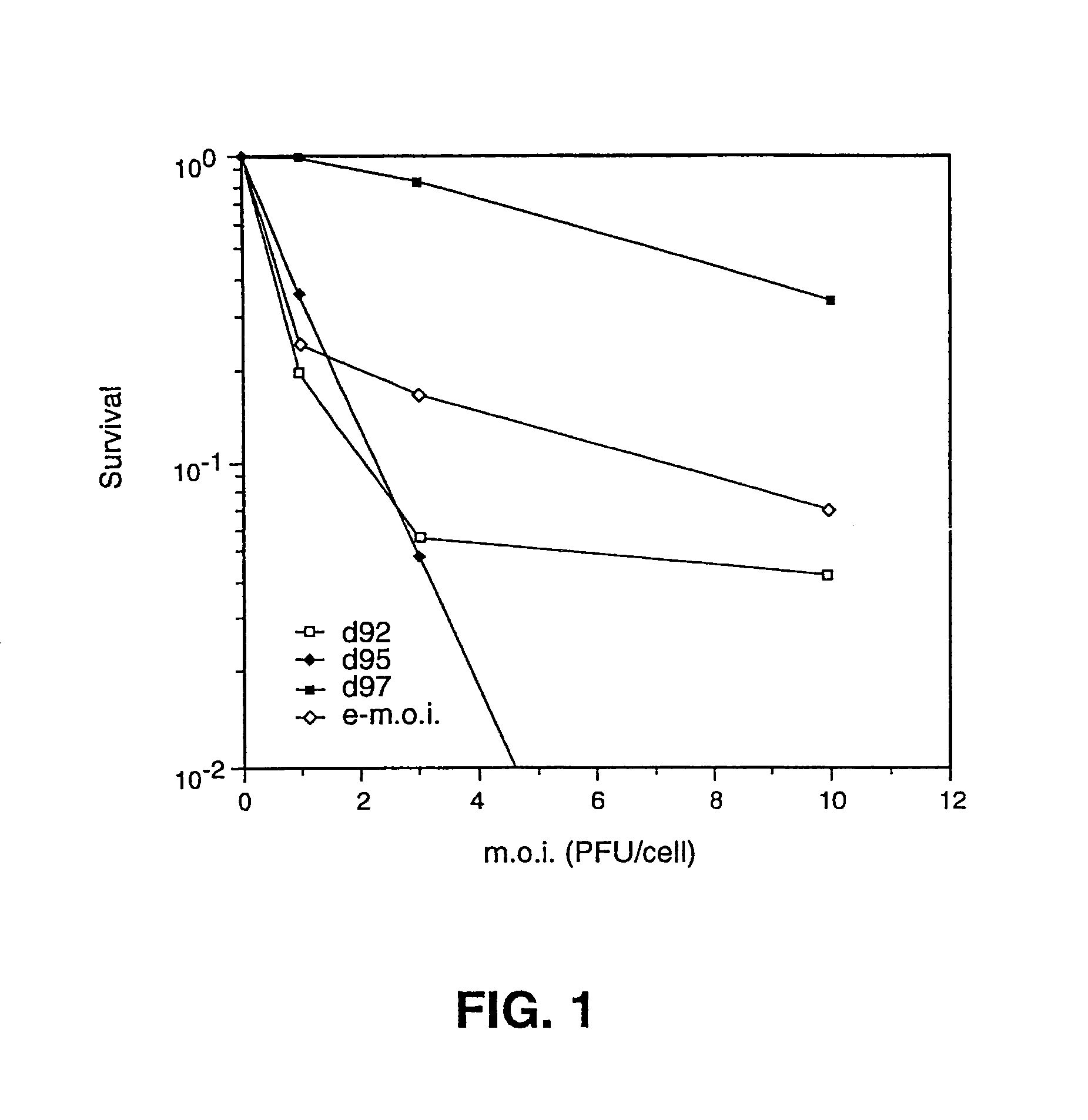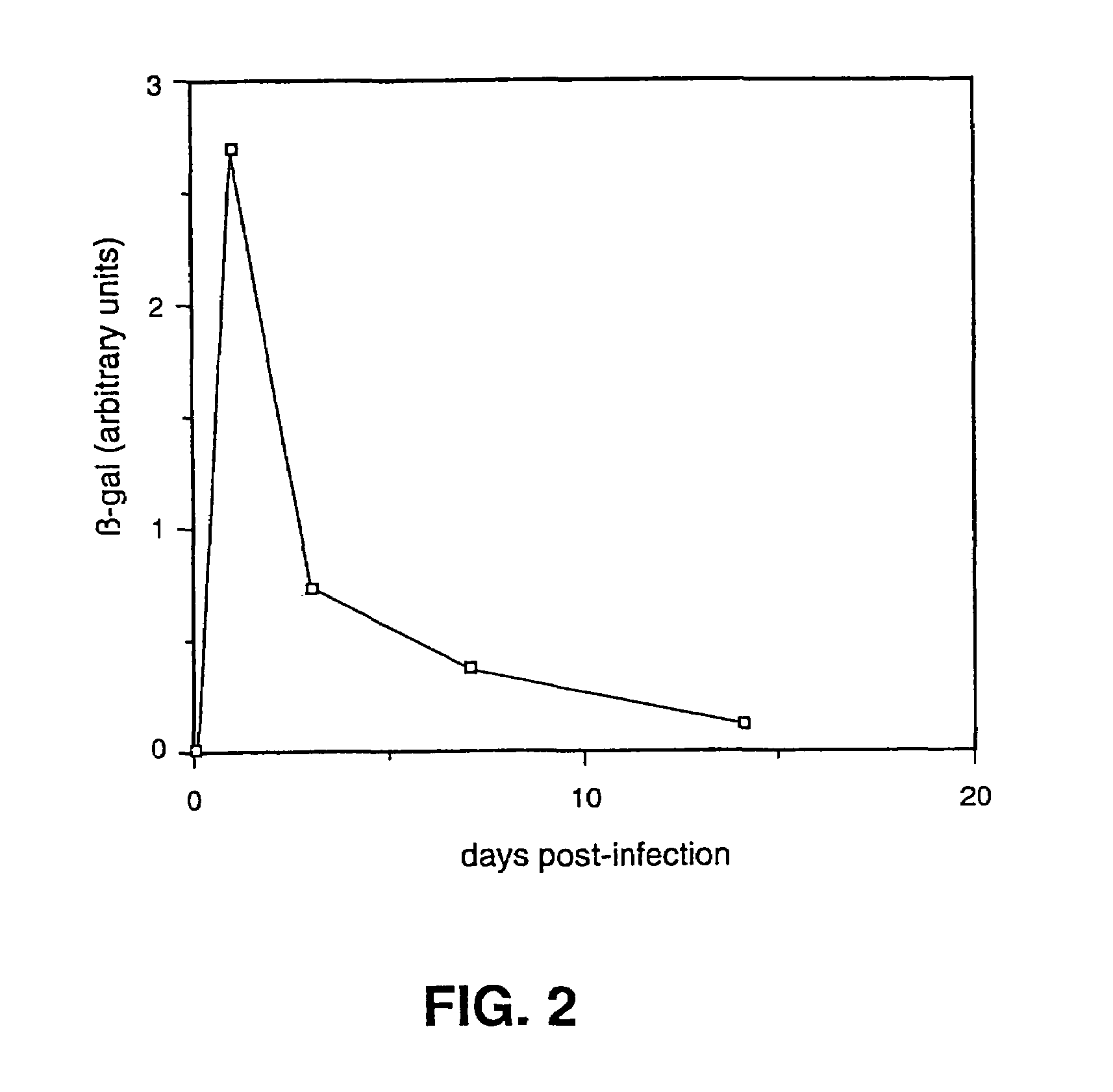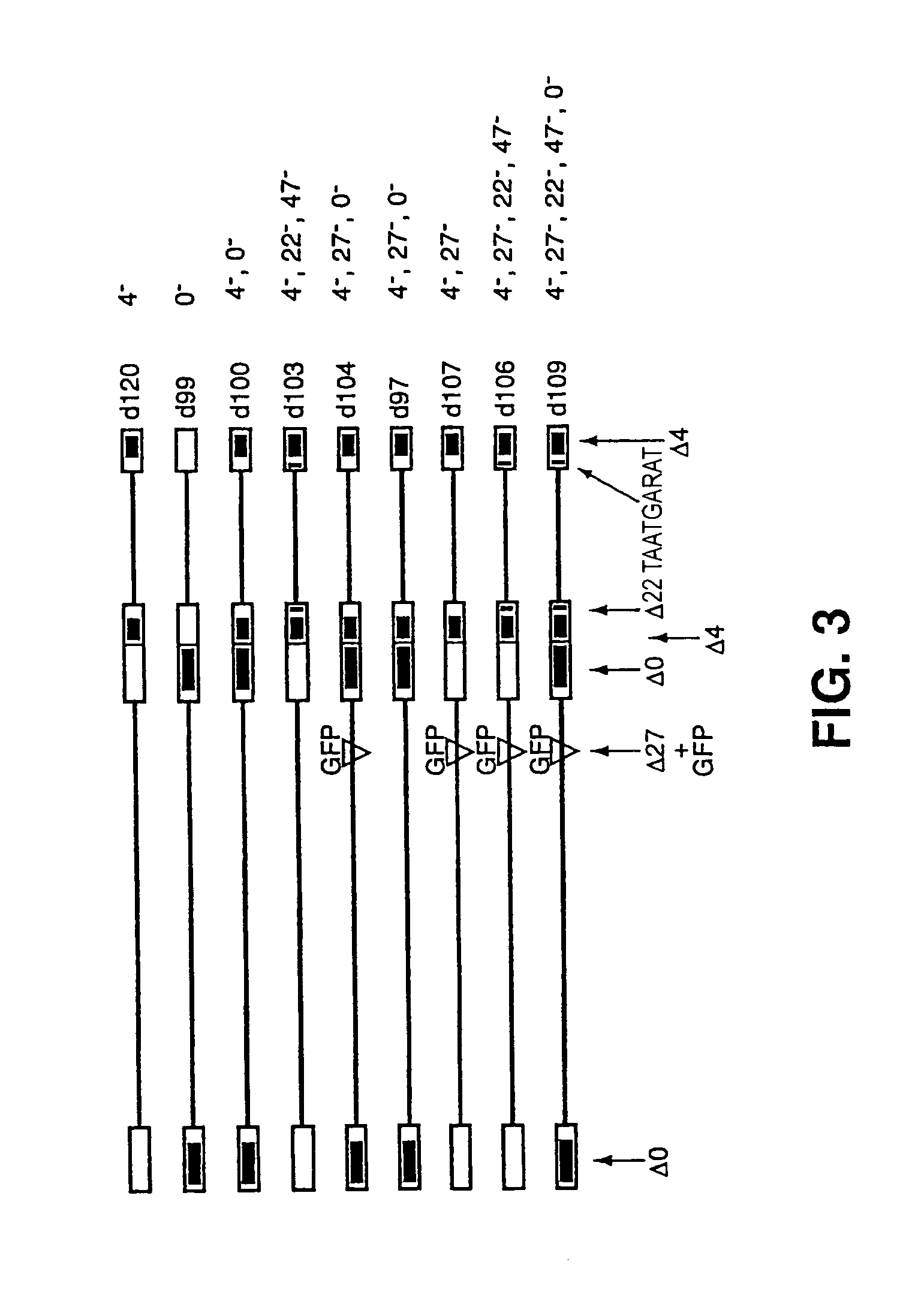Herpes simplex virus strains
a technology of herpes simplex and strains, applied in the field of herpes simplex virus strains, cell lines, can solve the problems of icp4-deficient viruses being toxic to infected cells, reducing the cytotoxicity of double mutants, and facilitating gene transfer, so as to reduce the reversion of wild-type, the effect of reducing the number of wild-type reversion
- Summary
- Abstract
- Description
- Claims
- Application Information
AI Technical Summary
Benefits of technology
Problems solved by technology
Method used
Image
Examples
example 1
[0053]This example demonstrates the construction and characteristics of a cell line complementing the HSV genes ICP4, ICP27, and ICP0 is demonstrated.
[0054]To construct the cell line, the E26 cell line, resistant to G418, was transformed with plasmids pW3-HS8 (Sacks and Schaffer, 1987, J. Virol. 61: 829–839; 5 μg) and pSV2hyg (which encodes resistance to hygromycin; 1 μg). Colonies were selected in the presence of G418 (400 μg / ml) and hygromycin (300 μg / ml) in accordance with standard protocols. All cell lines complemented d92; hence they provided ICP4 and ICP27. Only one of the 80 colonies screened also efficiently complemented both d92 and n212, a previously published ICP0 mutant. This clone, F06, resulted in a 30 fold increase in the number of ICP0 mutant virus plaques.
[0055]F06 cells are somewhat more growth impaired than E26 cells, presumably due to the combined toxic effects of ICP4, ICP27, and ICP0. Furthermore, the F06 cell line loses the ability to complement ICP0 mutants a...
example 2
[0056]The F06 cell line was used for the isolation of a HSV virus deficient in ICP4, ICP27, and ICP0. The triple mutant HSV resulted from the inactivation of the ICP0 gene from the d92 HSV strain.
[0057]Initially the virus 0β was constructed in the following matter. The plasmid pW3-HS8 contains a 4.5 kb SacI to PstI insert which encodes the ICP0 gene. The initiator methionine codon for ICP0 is present in an unique NcoI site in pW3-HS8. 700 bp into the protein coding sequence from Ncol is a unique BamHI site. The sequence contained in the 700 bp Ncol-BamHI fragment was replaced with the BamHI fragment from the plasmid pSC8 that encodes the E. coli β-galactosidase gene. This was done after deleting the 700 bp NcoI-Bam HI fragment and modifying the NcoI site in the ICP0 plasmid with synthetic linkers such that it accepts the β-gal-encoding BamHI fragment and puts the ATG in frame with the β-gal protein. This construction puts β-gal under ICP0 control. The resulting plasmid was linearize...
example 3
[0063]The F06 cell line was used for the isolation of a second HSV virus deficient in ICP4, ICP27 and ICP0. The triple mutant HSV resulted from the inactivation of the ICP0 gene from the d92 HSV strain.
[0064]A virus containing a deletion of the entire ICP0 gene, including the ICP0 promoter and flanking regions, was co-infected with d120 on E26 cells. Plaques were screened for the presence of the ICP4 and ICP0 alleles by plaque assay on different cell lines and by restriction fragment blot analysis. From this the virus d100 (FIG. 3) was isolated.
[0065]Within FO6 cells, d100 was recombined with plasmid containing a deletion of the ICP27 locus and the Green Fluorescent Peptide (GFP) under the control of the HCMV promoter at the ICP27 site. Plaques expressing GFP were screened for the presence of the ICP4, ICP27, and ICP0 alleles by plaque assay on different cell lines and by restriction fragment blot analysis. From this the virus d104 (FIG. 3) was isolated.
[0066]The genotype of d104 su...
PUM
 Login to View More
Login to View More Abstract
Description
Claims
Application Information
 Login to View More
Login to View More - R&D
- Intellectual Property
- Life Sciences
- Materials
- Tech Scout
- Unparalleled Data Quality
- Higher Quality Content
- 60% Fewer Hallucinations
Browse by: Latest US Patents, China's latest patents, Technical Efficacy Thesaurus, Application Domain, Technology Topic, Popular Technical Reports.
© 2025 PatSnap. All rights reserved.Legal|Privacy policy|Modern Slavery Act Transparency Statement|Sitemap|About US| Contact US: help@patsnap.com



